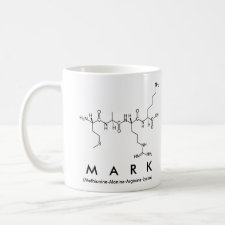
Authors: Ali M, Horikawa S, Venkatesh S, Saha J, Hong JW, Byrne ME
Article Title: Zero-order therapeutic release from imprinted hydrogel contact lenses within in vitro physiological ocular tear flow.
Publication date: 2007
Journal: Journal of Controlled Release
Volume: 124
Issue: (3)
Page numbers: 154-162.
DOI: 10.1016/j.jconrel.2007.09.006
Alternative URL: http://www.sciencedirect.com/science/article/B6T3D-4PPW6VC-1/2/763eac6c2a126c6f44742ef5bb97a60e
Abstract: Zero-order or concentration independent release kinetics are highly desirable from drug delivery devices. In this paper we demonstrate experimentally, for the first time, zero-order release of a small molecular weight therapeutic, ketotifen fumarate (MW = 425), from molecularly imprinted hydrogels used as therapeutic contact lenses. We performed dynamic, in vitro drug release studies from imprinted hydrogel contact lenses within a novel microfluidic device that simulates the volumetric flow rates, tear volume and tear composition of the eye. Imprinted gels with multiple functional monomers and complexation points to the drug demonstrated a significantly delayed release of drug compared to less functionalized systems. There were no statistical differences in experimentally determined equilibrium swollen polymer volume fractions, which correlate with molecular weight between crosslinks and mesh size of the gel. Under infinite sink conditions, imprinted contact lenses demonstrated Fickian (concentration dependent) release kinetics with diffusion coefficients ranging from 4.04 x 10- 9 to 5.57 x 10- 10 cm2/s. The highest functionalized gel exhibited a diffusion coefficient averaging ten times smaller than less functionalized gels and released drug for over 5 days with 3 distinct rates of release. Under physiological volumetric flow rates, the release rate was constant for a duration of 3.5 days delivering a therapeutically relevant dosage and was fit to a power law model indicating zero-order release characteristics with n = 0.981 +/- 0.006 (r2 = 0.997). This work demonstrates the potential of micro/nanofluidic devices to determine physiological release rates and stresses the importance of matching local conditions to adequately characterize drug delivery devices. It also demonstrates the enormous potential for molecular imprinting to further tailor therapeutic release kinetics via the imprinting process
Template and target information: ketotifen fumarate
Author keywords: biomimetic, controlled release, drug delivery, Microfluidics, molecular imprinting



Join the Society for Molecular Imprinting

New items RSS feed
Sign-up for e-mail updates:
Choose between receiving an occasional newsletter or more frequent e-mail alerts.
Click here to go to the sign-up page.
Is your name elemental or peptidic? Enter your name and find out by clicking either of the buttons below!
Other products you may like:
 MIPdatabase
MIPdatabase









